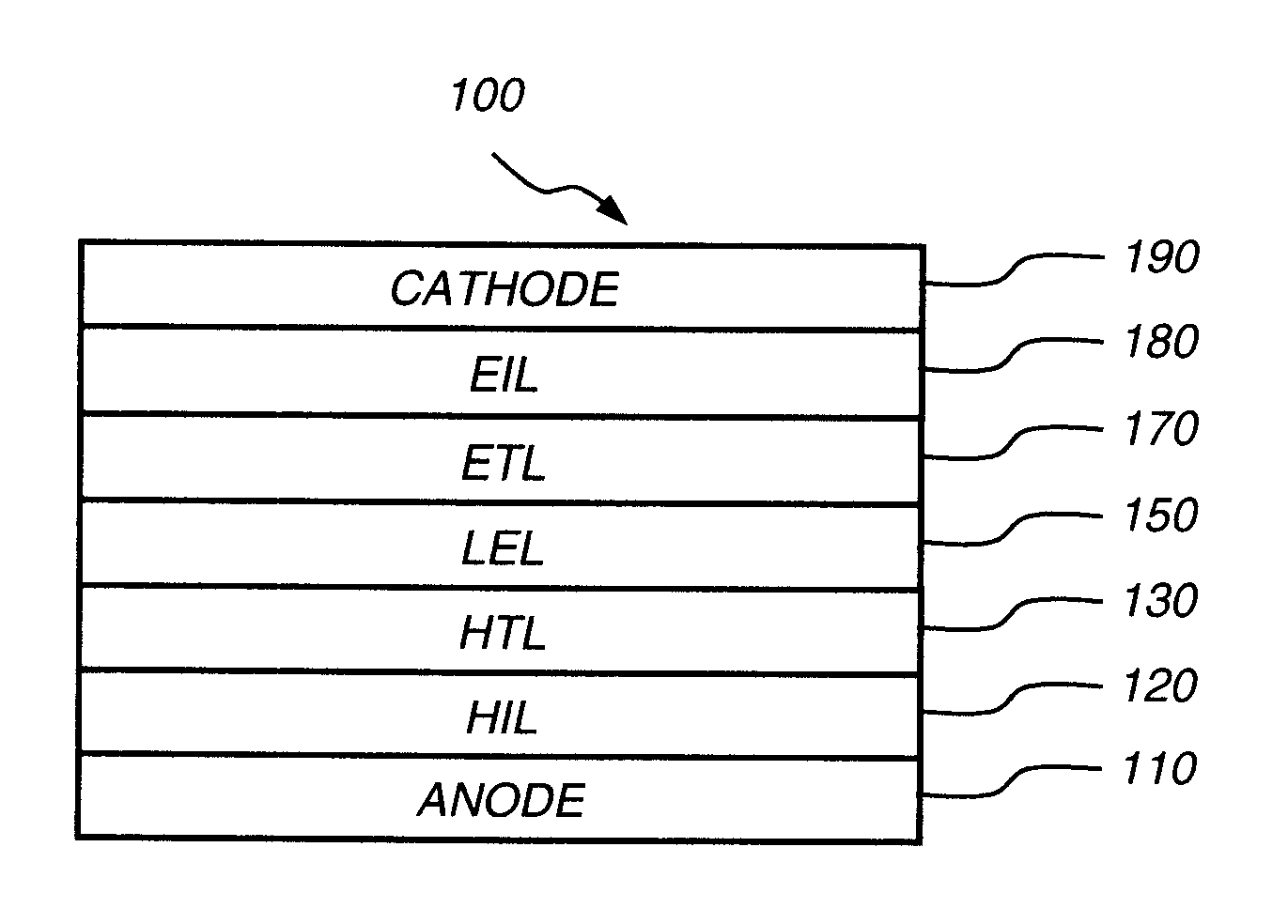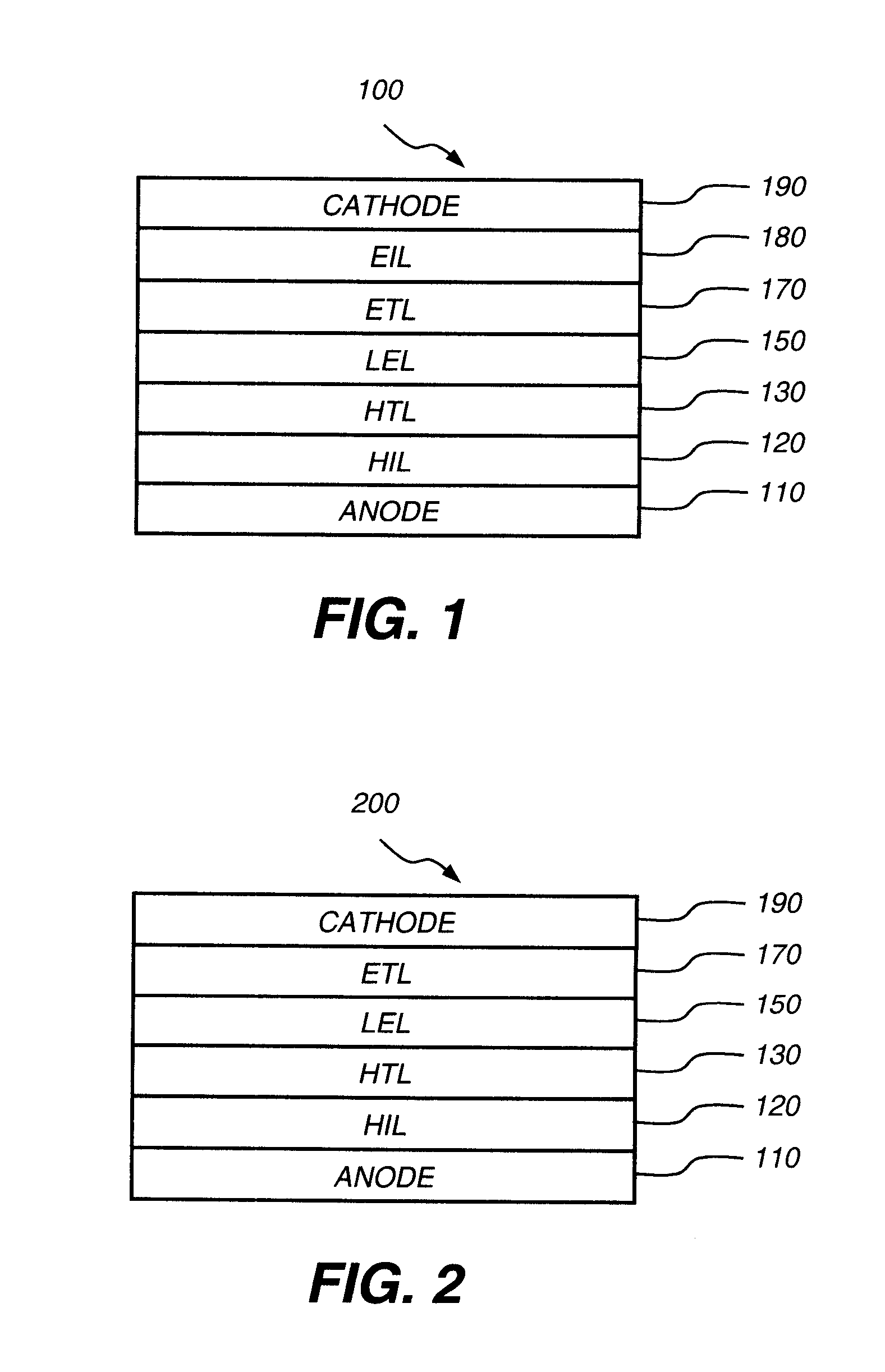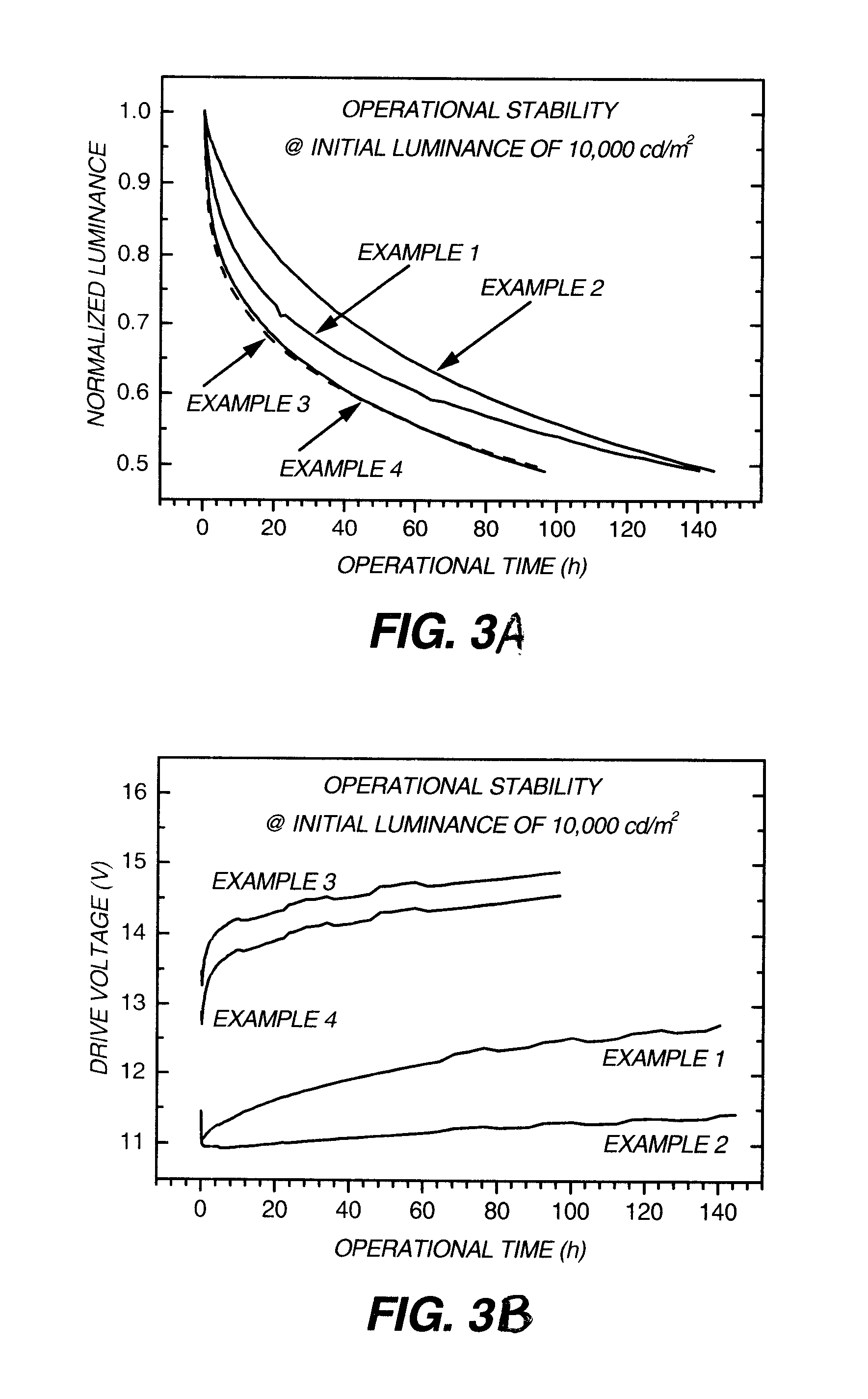Hole-injecting layer in oleds
a technology of oleds and holes, applied in the direction of discharge tubes/lamp details, discharge tubes luminescnet screens, organic semiconductor devices, etc., can solve the problems of high drive voltage, low operational life, and inability to effectively use anodes as-prepared or cleaned
- Summary
- Abstract
- Description
- Claims
- Application Information
AI Technical Summary
Benefits of technology
Problems solved by technology
Method used
Image
Examples
example 2 (
Inventive)
[0231]Another OLED (Device 2) which is fabricated with the same method and the same layer structure as Example 1, except that an HIL is inserted between the modified ITO anode and the HTL. The layer structure is:
[0232]a) an HIL, 55 nm thick, including hexaazatriphenylene hexacarbonitrile (HAT-CN) doped with 5% by volume of 4,4′,4″-tris[(3-ethylphenyl)phenylamino]triphenylamine (m-TDATA), wherein the reduction potential of HAT-CN is −0.08 V vs. SCE (greater than −0.1 V vs. SCE) and the oxidation potential of m-TDATA is 0.46 V (less than 1.0 V vs. SCE);
[0233]b) a HTL, 20 nm thick, including NPB;
[0234]c) a LEL, 30 nm thick, including Alq doped with 1.0% by volume of C545T;
[0235]d) an ETL, 30 nm thick, including Alq doped with 1.5% by volume of Li, which is also considered as an EIL; and
[0236]e) a cathode: approximately 210 nm thick, including MgAg.
[0237]Device 2 is denoted as: ITO / 55 nm (HAT-CN):5%(m-TDATA) / 20 nm NPB / 30 nm Alq:1.0% C545T / 30 nm Alq:1.5% Li / 210 nm MgAg. The EL ...
example 7 (
Inventive)
[0269]An inventive OLED (Device 7) is fabricated with the same method and the same layer structure as Example 6, except that the HIL includes a first material and a second material. The layer structure is:
[0270]a) an HIL, 55 nm thick, including HAT-CN doped with 5% by volume of Formula Inv-1, wherein the reduction potential of HAT-CN is −0.08 V vs. SCE (greater than −0.1 V vs. SCE) and the oxidation potential of Formula Inv-1 is 0.68 V (less than 1.0 V vs. SCE);
[0271]b) a HTL, 20 nm thick, including NPB;
[0272]c) a LEL, 30 nm thick, including Alq doped with 1.0% by volume of C545T;
[0273]d) an ETL, 30 nm thick, including Alq doped with 1.2% by volume of Li, which is also considered as an EIL; and
[0274]e) a cathode: approximately 210 nm thick, including MgAg.
[0275]Device 7 is denoted as: ITO / 55 nm (HAT-CN):5% (Formula Inv-1) / 20 nm NPB / 30 nm Alq:1.0% C545T / 30 nm Alq:1.2% Li / 210 m MgAg. The EL performance of the device is summarized in Table 4, and its operational stability is ...
example 8 (
Inventive)
[0276]An inventive OLED (Device 8) is fabricated with the same method and the same layer structure as Example 7, except that the thickness of HIL is increased. The layer structure is:
[0277]a) an HIL, 130 nm thick, including HAT-CN doped with 5% by volume of Formula Inv-1;
[0278]b) an HTL, 20 nm thick, including NPB;
[0279]c) an LEL, 30 nm thick, including Alq doped with 1.0% by volume of C545T;
[0280]d) an ETL, 30 nm thick, including Alq doped with 1.2% by volume of Li, which is also considered as an EIL; and
[0281]e) a cathode: approximately 210 nm thick, including MgAg.
[0282]Device 8 is denoted as: ITO / 130 nm (HAT-CN):5% (Formula Inv-1) / 20 nm NPB / 30 nm Alq:1.0% C545T / 30 nm Alq:1.2% Li / 210 nm MgAg. The EL performance of the device is summarized in Table 4, and its operational stability is shown in FIGS. 4A and 4B.
PUM
 Login to View More
Login to View More Abstract
Description
Claims
Application Information
 Login to View More
Login to View More - R&D
- Intellectual Property
- Life Sciences
- Materials
- Tech Scout
- Unparalleled Data Quality
- Higher Quality Content
- 60% Fewer Hallucinations
Browse by: Latest US Patents, China's latest patents, Technical Efficacy Thesaurus, Application Domain, Technology Topic, Popular Technical Reports.
© 2025 PatSnap. All rights reserved.Legal|Privacy policy|Modern Slavery Act Transparency Statement|Sitemap|About US| Contact US: help@patsnap.com



